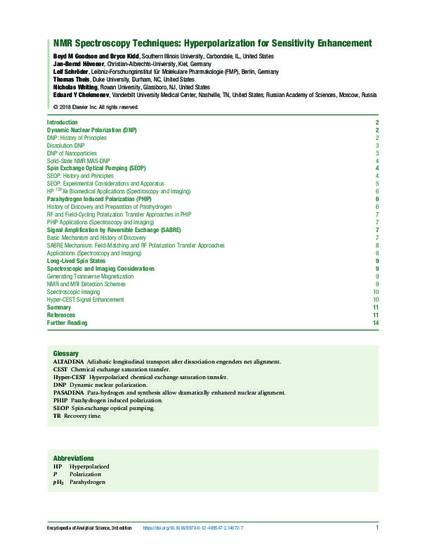
Contribution to Book
NMR Spectroscopy Techniques: Hyperpolarization for Sensitivity Enhancement
Encyclopedia of Analytical Science
(2018)
Abstract
Equilibrium nuclear spin polarization (P) is governed by the Boltzmann distribution, and it can be shown that P ~DE/2kT or P ~ għB0/2 kT for spin ½ nuclei, where DE is the Zeeman levels’ energy difference, ħ is the Planck constant (divided by 2pi), B0 is the static magnetic field, k is the Boltzmann constant, T is the temperature in Kelvin, and g is the gyromagnetic ratio for the nuclear spin of a given isotope. Even when high (e.g. 1.5–21 T) magnetic fields are applied, P is generally 10^-6 to 10^-4 for most frequently employed spin ½ isotopes: 1H, 13C, 15N, 129Xe, etc. The NMR signal strength is directly proportional to P, and since P is generally very low, it results in relatively low sensitivity of all conventional NMR experiments including most notably NMR imaging (or MRI).
Disciplines
Publication Date
2018
Editor
A. Mortlock
Publisher
Elsevier Publishing
DOI
10.1016/B978-0-12-409547-2.14072-7
Citation Information
Boyd M. Goodson, Bryce Kidd, Jan-Bernd Hovener, Leif Schroder, et al.. "NMR Spectroscopy Techniques: Hyperpolarization for Sensitivity Enhancement" 3Encyclopedia of Analytical Science (2018) Available at: http://works.bepress.com/nicholas-whiting/18/
